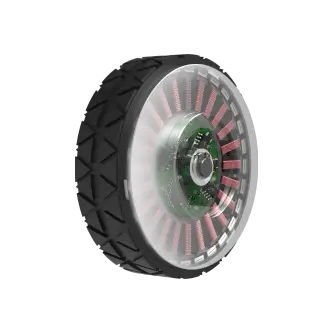The SG90 Micro Servo: Small Size, Big Impact
If you’ve ever tinkered with robotics, RC cars, or DIY gadgets, you’ve probably crossed paths with the SG90 micro servo. This unassuming 9-gram device is a staple in maker communities, but its true potential often goes untapped. Why? Because most people skip the datasheet. Let’s change that.

Why the SG90 Datasheet Matters
A datasheet isn’t just a technical manual—it’s a treasure map. For the SG90, it reveals everything from voltage limits to torque curves, helping you avoid burnout, optimize performance, and push creative boundaries. Think of it as the difference between using a tool and mastering it.
Breaking Down the Basics
The SG90’s datasheet starts with specs that seem simple but pack nuance:
Dimensions: 22.2 x 11.8 x 31 mm. Tiny enough to fit in a palm, yet robust enough for lightweight mechanisms. Weight: 9 grams. Perfect for drones or projects where every gram counts. Operating Voltage: 4.8V ±0.5V. Stray outside this range, and you risk frying the motor or getting sluggish performance. Stall Torque: 1.8 kgf·cm (at 4.8V). Translation: It can hold a small payload, like a mini camera or sensor, but don’t ask it to lift a soda can. Speed: 0.1s/60° (at 4.8V). Quick enough for responsive steering in RC cars or precise adjustments in robotic arms.
These numbers aren’t just trivia—they define the servo’s role in your project. For example, pairing the SG90 with a 3.7V lithium battery? Expect slower movement. Need more torque? The datasheet hints that 5V might help, but warns against sustained use.
The Hidden Language of Pulse Width Modulation (PWM)
The SG90’s movement is controlled by PWM signals, and the datasheet spells out the magic numbers:
Neutral Position: 1.5ms pulse width. Range: 90° rotation (0.9ms to 2.1ms pulses).
But here’s where it gets fun. By tweaking pulse widths slightly beyond these values, you can sometimes squeeze out a few extra degrees of rotation—a hack beloved by drone enthusiasts for finer control. Just don’t push too hard; the gears aren’t indestructible.
Thermal Limits: Avoiding the Meltdown
Ever noticed your SG90 getting hot after minutes of jittery movement? The datasheet’s temperature range (-30°C to +60°C) suggests it’s tough, but continuous stalling (overloading) can still warp gears or fry circuits. Pro tip: If your servo feels warm, give it a break. Better yet, design projects with duty cycles in mind—like a plant-watering robot that moves once an hour, not once a second.
Gear Materials: Nylon vs. Metal
The SG90 typically uses nylon gears, which are quieter but prone to wear under stress. Some premium versions come with metal gears, but they’re heavier and costlier. The datasheet won’t always clarify this, so check product listings carefully. For most hobbyists, nylon works fine—unless you’re building a battlebot.
From Datasheet to Real World: Projects and Hacks
Now that we’ve decoded the specs, let’s see how they translate into real-world applications. The SG90’s versatility shines in unexpected places.
Classic Uses (With a Twist)
Robotic Arms: Use two SG90s for a 2-DOF (degree of freedom) arm. The 1.8kgf·cm torque can handle small objects like chess pieces or LEDs. RC Vehicles: Modify steering mechanisms by calibrating PWM for smoother turns. Bonus: Use the temperature specs to plan cooling vents in your chassis. Camera Gimbals: Pair multiple servos for stabilization. The 0.1s/60° speed isn’t Hollywood-grade, but it’s enough for hobbyist filmmaking.
Offbeat Innovations
Smart Planters: Attach a servo to a lever that tips a water reservoir. Use the stall torque data to ensure it can handle the water weight. Interactive Art: Create kinetic sculptures that respond to sensors. The 9g weight lets you hide servos inside origami or papercraft. Pet Feeders: Time a servo to rotate a food dispenser flap. The nylon gears’ quiet operation won’t spook your cat.
Troubleshooting Like a Pro
Even with the datasheet, things go wrong. Here’s how to diagnose common issues:
Jittery Movement: Check voltage. A dying battery often drops below 4.8V, causing instability. Gear Slippage: If the servo hums but doesn’t move, gears might be stripped. Time to crack it open (carefully!) or upgrade to metal gears. Overheating: Reduce load or duty cycle. If your project requires constant motion, consider a beefier servo.
Pushing Boundaries: When to Upgrade
The SG90 is brilliant for lightweight tasks, but its limits are clear. If you need:
More Torque: Jump to the MG90S (metal gears, 2.2kgf·cm). Faster Speed: Try the DS3218 (0.06s/60°). Waterproofing: Look at the LD-27MG.
Still, the SG90 remains the gateway drug of servos—affordable, accessible, and endlessly hackable.
Conclusion: The Joy of Tiny Machines
The SG90 micro servo isn’t just a component; it’s an invitation to experiment. Its datasheet isn’t a rulebook but a starting point for innovation. Whether you’re building a robot, automating your desk, or just making something that whirs and spins, this little motor proves that big ideas don’t need big parts. So grab your SG90, crack open that datasheet, and start creating—your next project is already in motion.











































